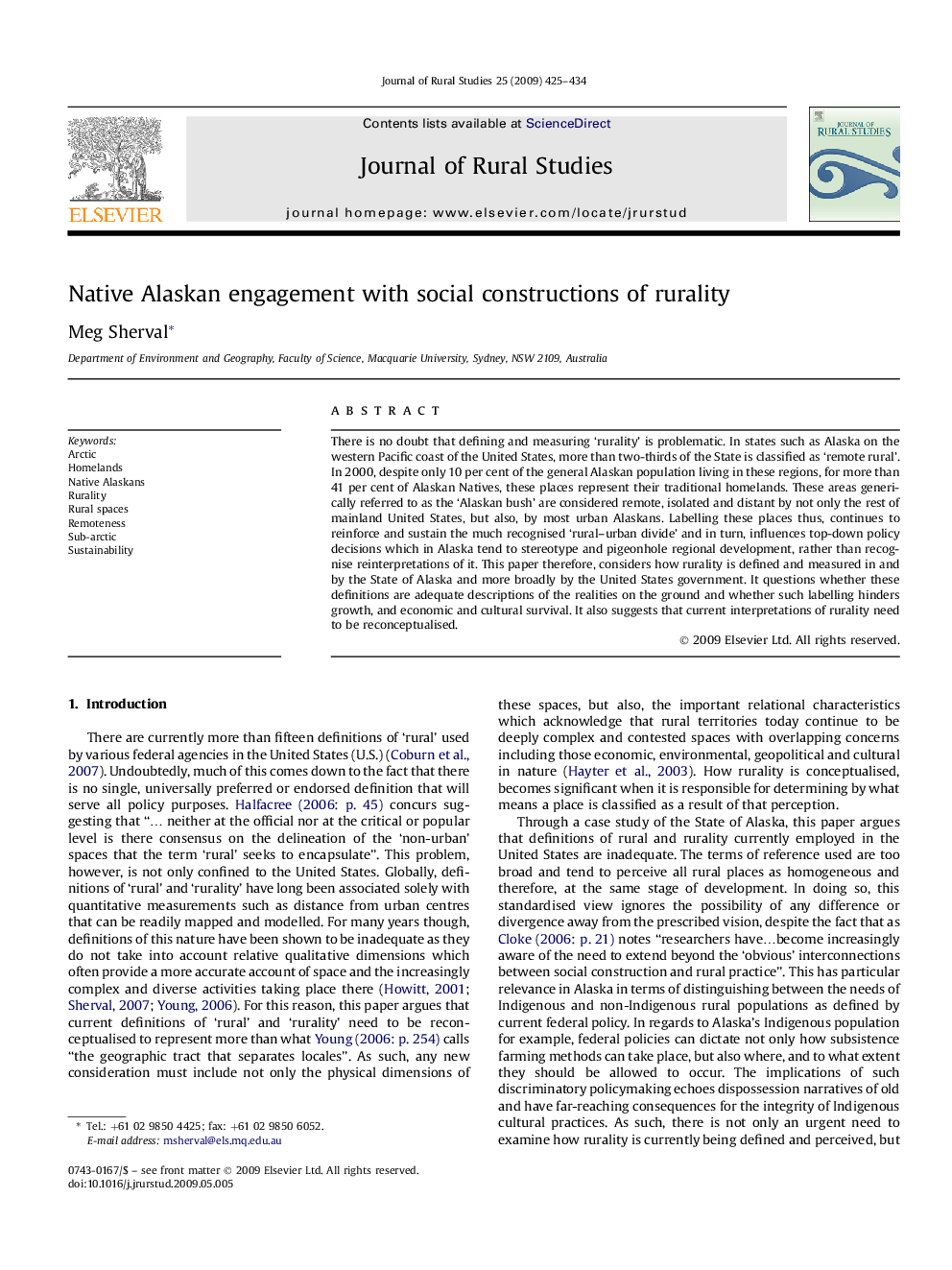| کد مقاله | کد نشریه | سال انتشار | مقاله انگلیسی | نسخه تمام متن |
|---|---|---|---|---|
| 92687 | 159992 | 2009 | 10 صفحه PDF | دانلود رایگان |

There is no doubt that defining and measuring ‘rurality’ is problematic. In states such as Alaska on the western Pacific coast of the United States, more than two-thirds of the State is classified as ‘remote rural’. In 2000, despite only 10 per cent of the general Alaskan population living in these regions, for more than 41 per cent of Alaskan Natives, these places represent their traditional homelands. These areas generically referred to as the ‘Alaskan bush’ are considered remote, isolated and distant by not only the rest of mainland United States, but also, by most urban Alaskans. Labelling these places thus, continues to reinforce and sustain the much recognised ‘rural–urban divide’ and in turn, influences top-down policy decisions which in Alaska tend to stereotype and pigeonhole regional development, rather than recognise reinterpretations of it. This paper therefore, considers how rurality is defined and measured in and by the State of Alaska and more broadly by the United States government. It questions whether these definitions are adequate descriptions of the realities on the ground and whether such labelling hinders growth, and economic and cultural survival. It also suggests that current interpretations of rurality need to be reconceptualised.
Journal: Journal of Rural Studies - Volume 25, Issue 4, October 2009, Pages 425–434